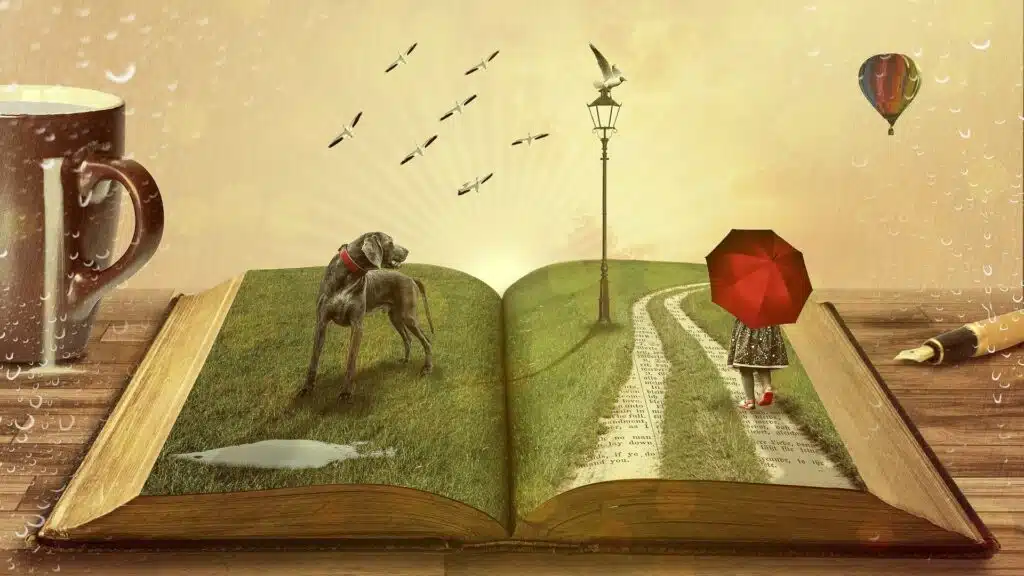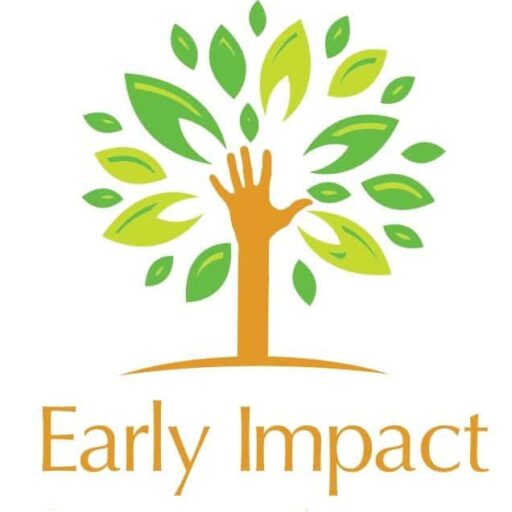
Who doesn’t love a good story? What better way to introduce a new story to your children than with a story box? If you’ve never come across a story box before, it is basically what it says on the tin:
The elements of a story… in a box.
A story box is a brilliant way of bringing a story to life and creating enthusiasm and excitement around a story.
Young children often love to hear a story again and again. In the same way, they will watch the same TV program or their favorite film many times. They like to hear a story repeated. Repetition is important as it helps children remember a story’s key parts. We can’t expect children to be able to write a story until they understand how a story works, and hearing a familiar story will often help with this.
A story box can also help children understand how a story works by letting them experience the same story in many different ways. This can help them to both understand the story and also remember the story.
All stories have certain things in common. They all have the following:
- A setting (a place or places where the story happens)
- Characters (people, animals, or creatures in the story)
- A problem to overcome
- A beginning
- A middle
- An end
Most children love to act out a story. When they take on a role and act as a character, it helps them to understand and remember the story, especially if there are repetitive phrases like:
“Fee fi fo fum,” “You shall go to the ball,” or “Who’s been sitting in my chair?” Allowing children time to play at being the characters can help them to memorize the story and understand it on a deeper level.
There are plenty of expensive story boxes you can purchase, but you don’t need to spend much money. You can easily make a story box yourself. Even better, you can use lots of recycled or reclaimed materials and resources to make them. Read on to discover how:
1 The Box
A story box can be a box, but it doesn’t have to be a box literally.
You could start with any of the following:
- A large bag
- A wicker basket
- A material sack
- A shoe box
- A large cardboard box
- or even a large tray
2. The Story
The story you choose will depend on your children. If you are working with younger children, it’s a good idea to choose a story with plenty of repetition built into it. If you’ve never made a story box before, traditional tales or fairy tales are always a good place to start, but you can choose any story. The key is that your children will enjoy and be interested in it.
3. The Setting
Think about where the story takes place. You don’t have to create every single setting if there are many different settings in your story. Choose the most important places. Within your story box, you need something to represent those settings. There are lots of ways to do this:
- Use toy fences and bushes to create a farm or zoo.
- Use a small doll house for a fairy tale like Hansel, Gretel, or Goldilocks.
- You can google photographs or pictures of settings and print and laminate them to provide a backdrop.
- You can take your photographs.
- You can provide shallow trays with surfaces like bark, sand, or gravel. I’ve seen seed trays and even washing-up bowls used to create a setting.
You can provide props to represent the setting. Here are a few ideas I’ve seen work well:
- Beach: a collection of shells, a jar of sand, and a silky blue scarf
- Forest: pine cones, small branches, and some fake leaves or twigs stuck into plastercine.
- Palace: a shoebox box with doors and windows cut out, decorated with sequins and tinsel.
- Desert – Large pieces of yellow/brown cloth or material and a few pebbles and toy camels.
- Garden – add textures to a tray, such as sand, soil, bark or gravel, rice, and fake flowers.
4. Characters
Every story has characters, even if they aren’t human, so your story box needs to include characters. I‘ve found charity shops and car boot sales to be the best place to collect the characters I’m looking for in my story boxes, but you could also try putting out an appeal to parents. Asking for toy animals or people can result in some lovely resources being donated. Think of the key characters in your story. Who couldn’t you tell the story without? These characters need to be represented in your story box.
Characters can be :
- Small dolls or toys
- Toy animals
- Finger puppets
- Soft toys
- Dressing-ups
You can also make your homemade characters, for example:
- Pictures of characters laminated and stuck onto wooden spoons
- Wooden clothes pegs with characters drawn on them
5. Props
When you have a setting and your characters sorted, it’s time to think of the key elements in your story and add some props.
Props should give children the tools they need to retell the story. They should be a memory aid and a spark to catch their imagination.
Here are a few ideas for essential props.
- Cinderella (magic wand, a glass slipper, a small pumpkin, an invitation)
- Jack and the Beanstalk (a purse with some runner bean seeds, some ‘gold’ coins, and a goose)
- Hansel and Gretel (some white stones, a bone, a witches hat, and a key)
- Red riding hood (a wolf mask, a basket, a red cape or coat, a pair of old glasses)
6. Research Information
I always like to include some non-fiction books in my story boxes. Boys are often more interested in facts than fiction (and sometimes girls are too), so adding a few information books can help draw them into the story.
If your story box is Little Red Riding Hood, try adding information books on wolves and forests. You could even type a list of facts about wolves onto an information card.
This encourages wider research around the story. When children begin to write their own stories, they will have more ideas and knowledge, and their stories will be richer.
If your story box is a pirate story – add some information books about real pirates, magazines about ships, or even a list of websites to explore. Children love to find out about similar real-life characters.
7. Bringing It To Life
When you introduce your story, try to add a bit of drama. If you’ve ever seen a play or a musical in the theatre, think how exciting it is as the curtain lifts on the opening scene. Aim to create the same feeling with the children so they are drawn in and excited by the story and your storytelling.
Here are some ideas to create a bit of magic:
- Turn the lights off and light a candle.
- Play some dramatic background music, turning it down just before you start to read.
- Whisper to the children that you have a very special story and a character to introduce them to.
- Pretend you’ve found the story box and don’t know what’s inside.
- Sprinkle a bit of glitter / put up some Christmas tree lights (without the children seeing)
- Take the children outside and introduce the story in real woodland.
- Show some props and ask the children to guess what the story could be about.
8. Using The Story Box
There are as many different ways to use a story box as there are different stories.
- You may decide to tell the story first and then bring the setting, character and props out to introduce them to the children.
- You could start with the props, talk about who they may belong to and then tell the story.
- You could put the story box out in the continuous provision for the children to practise retelling the story independently
- You could use the story box as a focus and help the children retell the story.
9. Here are a few story boxes that I’ve seen work particularly well in schools and settings, and they were all home-made, costing very little, but had a lot of play value:
10. Kipper’s Beanstalk
Box – A large plastic box
Setting – a garden made from a tray of compost
Character -A small soft toy of Kipper.
Props -a child’s watering can, rake, spade, a packet of runner bean seeds, a plant pot, wellies, and a tape measure.
Non-fiction – books about plants /gardening magazines.
11. Jack and the Beanstalk
Box – a large material bag.
Setting – A3 laminated picture scenes of a cottage, a market, and a castle
Characters – wooden pegs decorated as Jack, his mother, a man, a wooden spoon with a giant’s face, and a toy cow.
Props – a purse with seeds, a soft toy goose, and a net of (chocolate) gold coins. A huge wellington.
Non-fiction – books about real castles, fact cards about how to plant seeds. Other books about giants.
12. The Magic Porridge Pot
Box: a large cardboard box.
Setting: a small plastic doll house, laminated A3 picture freeze of an old town.
Characters: small plastic figures of a woman and man / a flat cap and a mop cap
Props: A packet of porridge oats, a wooden spoon, a bowl, a magic wand
Non-fiction – recipe books. Homes in the past.
13. The Gingerbread Man
Box: A wicker basket.
Setting: large pieces of green and blue material (river and fields)
Characters: a gingerbread man (a real one works best, so it will need replacing each time you use the box) old woman, a toy cow, a pig, a horse, a man, and a fox (depending on the version of the story you use).
Props: a mixing bowl, wooden spoon, pastry cutter, ingredients: sugar, flour, butter, syrup, ginger
Non-fiction: recipe books or magazines, farm animals.
None of the above ideas cost a lot of money, and by using them to create an atmosphere around the stories, the children had a lot of fun and wrote lovely stories of their own too.
Playing with tactile resources to retell and remember the key moments in a story can help children get involved and enjoy it.
Some children can remember a story by just listening to it, but for many children, visual aids and prompts can really help.
You could use the ideas above or create your own story boxes using a favorite story that your children love. And don’t forget to check out our online course Literacy & Storytelling Launchpad.
There really is no right or wrong way to make a story box. As long as the children have fun and learn, everyone is happy.
